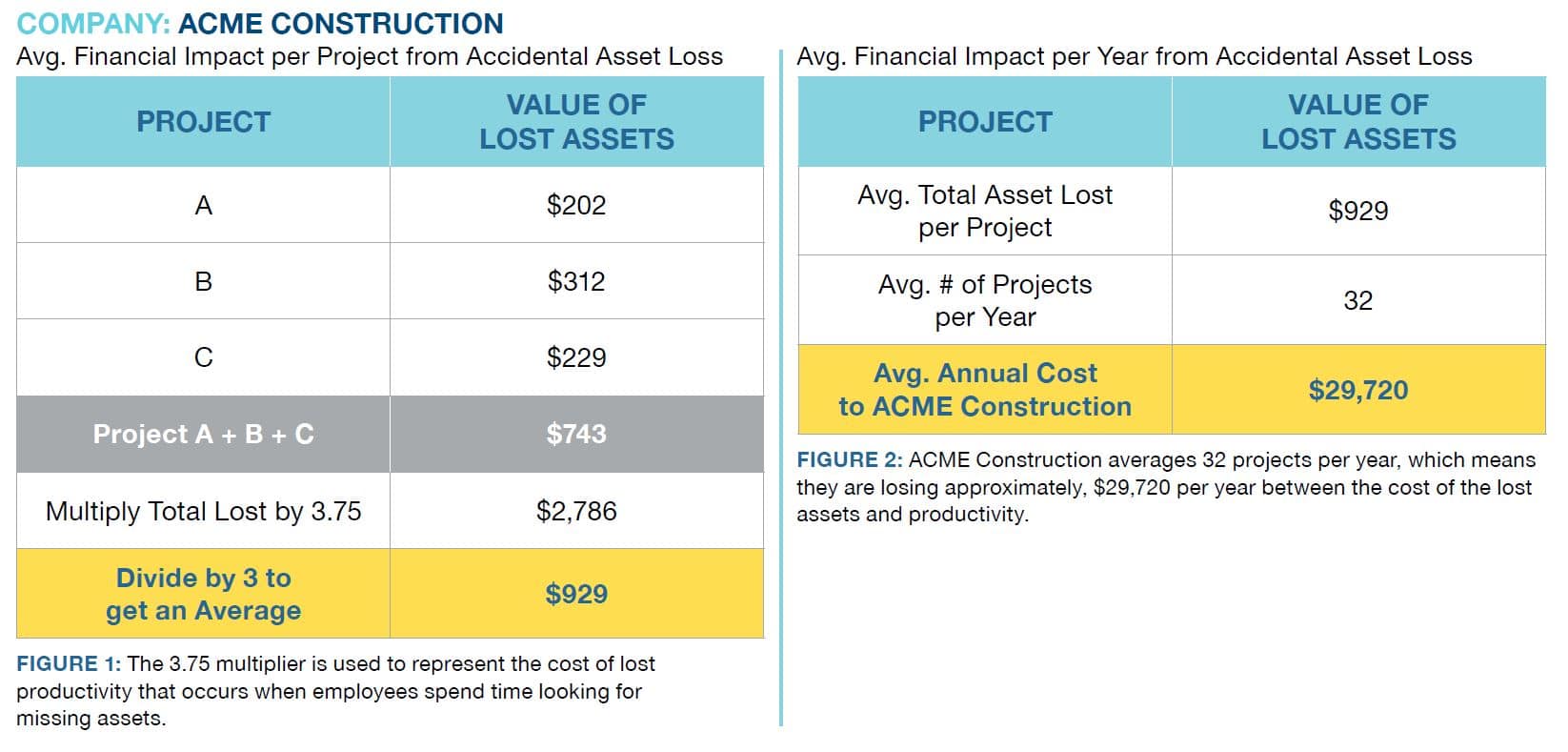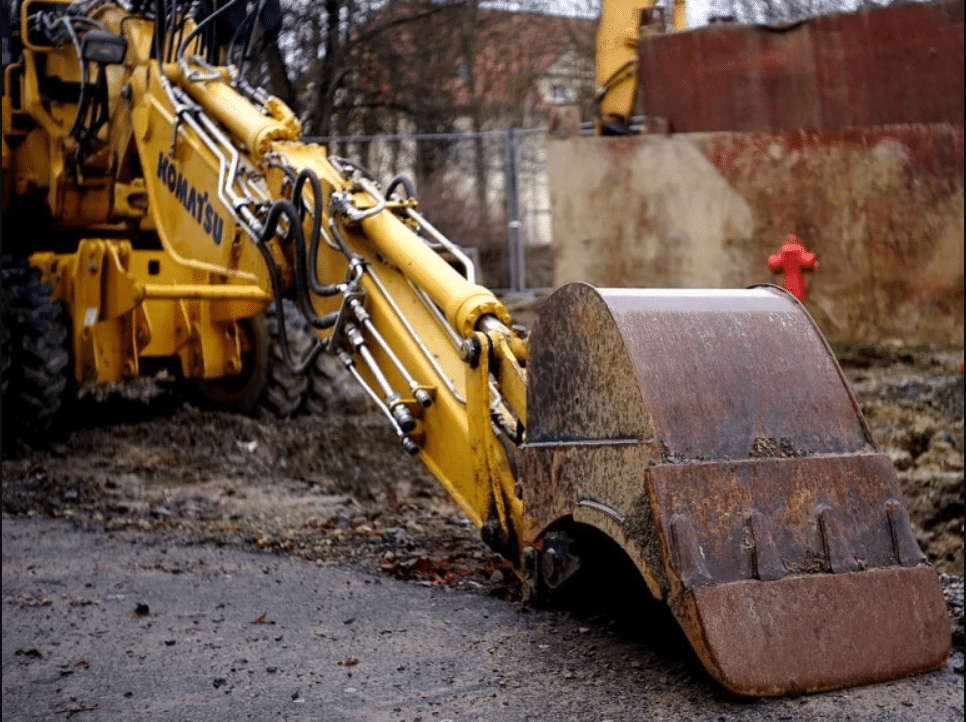How can construction companies reduce accidental asset loss?
It will begin by providing a worksheet that can be used to estimate the financial impact that missing tools and equipment are having on your business before looking at the most common asset tracking methods being practiced today and how they’re largely ineffective.
A simple, total asset tracking solution is then presented as the antidote to today’s ineffective methods in curbing the financial impact from lost tools and equipment.
A case study from J&M Keystone, Inc., shows how they reduced their annual tool and equipment loss from $30,000 to approximately $1,500 by utilizing a combination of quality QR barcodes labels, smartphone scanning technology, and a straightforward easy-to-use asset management software.
Finally, a detailed checklist for what to look for in such a system is provided at the end of the document.
In this article...
CALCULATING THE FINANCIAL IMPACT OF ACCIDENTAL ASSET LOSS
Getting to an accurate figure on the financial impact misplaced assets is having on your business is more challenging than what might appear on the surface, for three primary reasons:
- keeping ghost assets on the books
- trying to figure out how many lost hours of productivity is spent locating missing tools
- and a lack of any agency that tracks and reports such data
1. GHOST ASSETS
12–25% of construction business assets are being reported on the books although they don’t actually exist.
Only 17% of construction businesses have the technology in place that allows for proper auditing of assets.
That means not only is their sparse industry data on the impact of accidental asset loss but the data also suggests that many managers and teams are left in the dark without any clear visibility in how much this problem is hurting their bottom line.
2. LOST PRODUCTIVITY IMPACT
According to AACE International Recommended Practices, “there is no uniform agreement within the construction industry as to a preferred methodology of calculating lost productivity.“
Each construction company tracks employee ROI differently (if at all), proving difficult in finding a reliable industry consensus on how much the average construction business loses when employees stop working in order to search for missing assets, submitting requests for replacements, and having to track down unused tools and equipment to send to the job site.
3. LACK OF INDUSTRY REPORTING
Unlike equipment theft, a $400 million industry problem, which is carefully tracked by the National Insurance Crime Board (NICB), construction companies don’t file any claims to a reporting agency when tools and equipment vanish from job sites.
Yet again, leaving little industry statistics that detail the magnitude of this problem that is often felt by construction companies but difficult to quantify.
The next logical question is—what can be used to gauge the financial impact your construction business faces when tools and equipment go missing?
A recent study conducted by toolwatch reported that a misplaced $80 grinder ended up costing a construction company $300 (about four times the actual value) between the time spent looking for the tool and locating an unused grinder to send to the job site.
Using the hypothetical company (ACME Construction) as an example, the data reported by toolwatch can be used to get a rough estimation for the average amount of money lost on a per-project basis from misplaced tools and equipment (FIGURE 1).
Additionally, once an average is produced, we can extrapolate that number to come up with a yearly financial impact (FIGURE 2).

You may find it helpful to use the templates below to calculate your own numbers.
Construction managers and teams are becoming more vocal about the impact missing tools and equipment are having on their jobs.
The top three biggest complaints include:
- Delayed productivity from not having the proper tool onsite when needed
- The hours spent searching for misplaced tools
- Having to spend additional money buying double the number of tools needed.
Unfortunately, the current solutions being employed by contractors and construction companies to combat accidental asset loss is largely ineffective.
WHAT’S WRONG WITH EXISTING ASSET TRACKING SOLUTIONS?
Some of the most common ways to track tools and equipment are:
- Using a sharpie marker
- Excel spreadsheets
- Desktop software
- Handheld scanners and labels.
Let’s examine the drawbacks of each of these methods for tracking tools and equipment.
While a sharpie marker easily identifies the owner of a given asset, this quick-and-dirty method for marking tools and equipment doesn’t come without its limitations:
- Markings can wear off and become unreadable, leading to confusion as to who owns what.
- Extremely limited in its capabilities. To put simply, a sharpie marker isn’t the same as having sturdy barcode labels, a scanning device, and compatible asset tracking software.
Excel spreadsheets are problematic for most everyone responsible for the management of business assets (the exception being the creator of the documents).
The top drawbacks to relying on spreadsheets include:
- Missing key data points (i.e. warranty information) pertinent to good asset management practices
- Lacks easy accessibility. It’s not always intuitive knowing where a given file is stored on a computer
- Can be difficult to make sense of the data—especially when the document becomes bloated with excessive rows, columns, sheets, and formulas.
To make matters worse, if the creator of the spreadsheet leaves the company and doesn’t properly hand it off, your company’s asset management system will quickly become outdated and obsolete.
Antiquated software is still being used by many construction companies for fear of facing a steep learning curve often associated with new technology.
Major drawbacks to using older generation software include:
- Having a tired visual interface that lacks modern features
- Inability to access data on multiple devices (i.e., laptop, tablet, smartphone)
- Frequent software crashes since the company who created the program stopped fixing bugs—thus leaving the program useless and vulnerable to viruses, malware, and hackers.
Handheld scanners and labels are costly proprietary equipment that’s easily damaged and often misplaced (much like tools and equipment).
Drawbacks include:
- The need to operate the scanner near a computer given their limited range
- No user login makes it challenging to track down who scanned a given asset
- Poorly made labels that have difficulties withstanding harsh working environments
- Scanners and labels are often purchased separately from the asset tracking software—presenting compatibility challenges.
The current solutions presented above may work well for small operations but quickly become ineffective once construction companies begin purchasing more inventory, add headcount, and take on larger projects.
AN IDEAL SOLUTION: A TOTAL ASSET TRACKING SYSTEM
Fortunately, a solution already exists that’s being adopted by many construction companies.
A total asset tracking system that can help limit the number of tools and equipment a business loses: which has the benefit of saving time and money.
How does this solution save time and money?
With an ecosystem of products that work together in tracking the whereabouts of construction assets.
The products themselves, include:
- Durable, Customized QR Code Identification Labels
- A mobile app that does Barcode Scanning
- Cloud-Based Asset Tracking Software
Instead of dealing with handheld scanners, which are not only costly but usually incompatible with modern software; having a mobile app that works on both Apple and Android phones allows for quick scanning and automated syncing with compatible asset tracking software.
Cloud-based software means that all of the data associated with your assets are stored on remote servers (as opposed to a local computer). This is immensely beneficial for two reasons: accessibility and security.
The easy accessibility allows anyone to view who has a given asset, where it’s located through GPS technology, and the ability to check when an item is
overdue on any device with an internet connection— desktop computers, laptops, tablets, and smartphones.
It’s more secure than desktop software since the remote servers are built and maintained to prevent cyber threats such as malware and viruses.
A construction business needs high-quality labels to put on their assets that won’t slip, peel, or wash off from daily use and can withstand harsh weather conditions.
Additionally, each label contains a QR barcode that allows for easy scanning from either Apple or Android phones. The added benefit to a QR barcode is the ability to assign each asset a unique number for greater tool and equipment accountability.
CASE STUDY
J&M Keystone, Inc., provides residential and commercial construction services. According to their operations manager, Lee Sherman, the company was losing a lot of money from accidental tool and equipment loss.

“We would lose a lot of equipment,” explains Sherman. “We were losing about $30,000 of equipment every year, on average.”
The company began utilizing a total asset tracking solution and immediately saw the benefits when their costs dropped from $30,000 to about $1,500 a year.

Two major differences stand out between current asset tracking solutions (sharpie marker, excel spreadsheets, desktop software, handheld scanners) and today’s total asset management solutions: interconnectivity and automation.
Capitalizing on today’s cloud-based technologies, contractors are able to scan a tool or piece of equipment from their smartphone, and all the relevant information from where the asset is located to who’s responsible for it is available on-demand from any device that has internet connectivity.

As we have seen, traditional solutions are clumsy, manual, and lack interconnectivity: leaving the door open for misplaced assets and theft.
Contrast that with today’s total asset management solutions which are simple, automated, and work as a cohesive unit.
CHECKLIST: WHAT TO LOOK FOR IN A SOLUTION
These lists detail what to look for when selecting a total asset management solution.
- Customizable—ability to add your company name, contact details, and color logo
- Durable material such as anodized aluminum foil or metal tags
- QR code technology
- GPS tracking
- Identification technology so each asset is assigned a randomized, globally-recognized code.
- No software to manually download
- Intuitive interface that’s easy to use
- Available on multiple devices—desktop computer, laptop, tablet, and smartphone
- Supports multiple user logins
- Allows for custom data fields and the ability to add photos and web-links
- Automatically sends field service requests
- Inventory management
- Multiple different reporting options
- Compatible with both Apple and Android phones
- Ability to check-in and out single or multiple assets
- No additional barcode scanners to purchase.
- Risk-free trial
- Client referral list from well-established businesses
- Peer-reviewed in a leading industry publication
- Multiple pricing tiers to fit your business needs.
CONCLUSION
To limit the number of accidental tool and equipment loss, construction managers and teams need an easy-to-use system that can manage
their assets.
The preferred solution is a total asset management package—a secure, on-demand, cloud-based system for managing tools and equipment.
Among other things, this platform must come with highly durable labels that can withstand harsh conditions, a mobile app to scan assets and provide pertinent information and intuitive software that can be accessed on different devices.
A system that meets these requirements is available today from GoCodes Asset Tracking, a leading supplier of total asset management solutions for construction companies.
About GOCODES
Proudly based in MN, USA, GoCodes Asset Tracking has serviced more than 1,000 international customers. The company has been reviewed in PC Magazine and was featured on the US hit TV show ‘I want that.’
Clients include Amazon Studios, Hyatt, Nestle, Trane, University of Washington, and Jim Beam.
To find out more about how GoCodes Asset Tracking can help you overcome the costly burden of accidental asset loss, try a free demo by visiting www.gocodes.com, or call one of our industry consultants on 1-800-513-5778.
Download the full report here.


